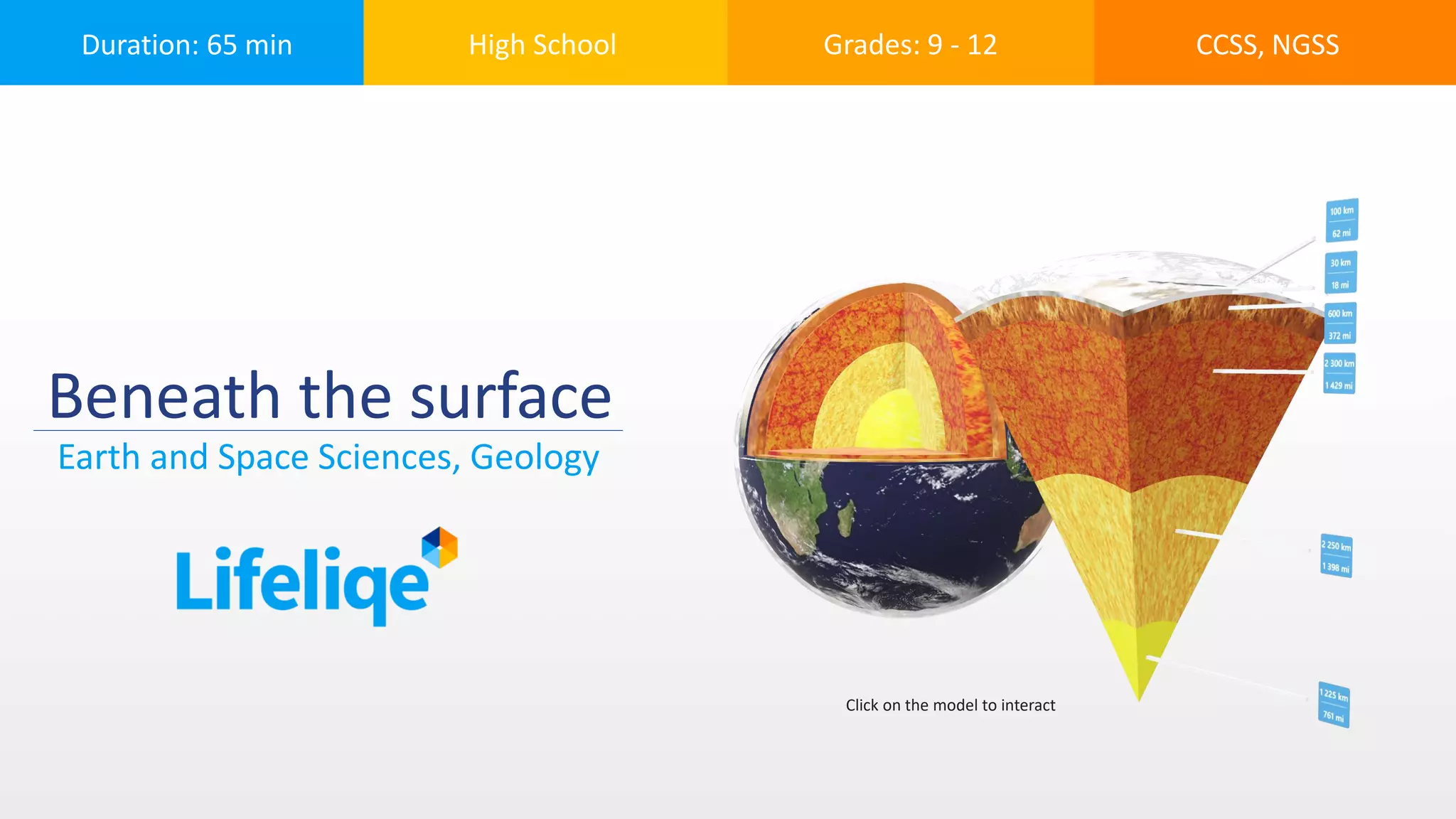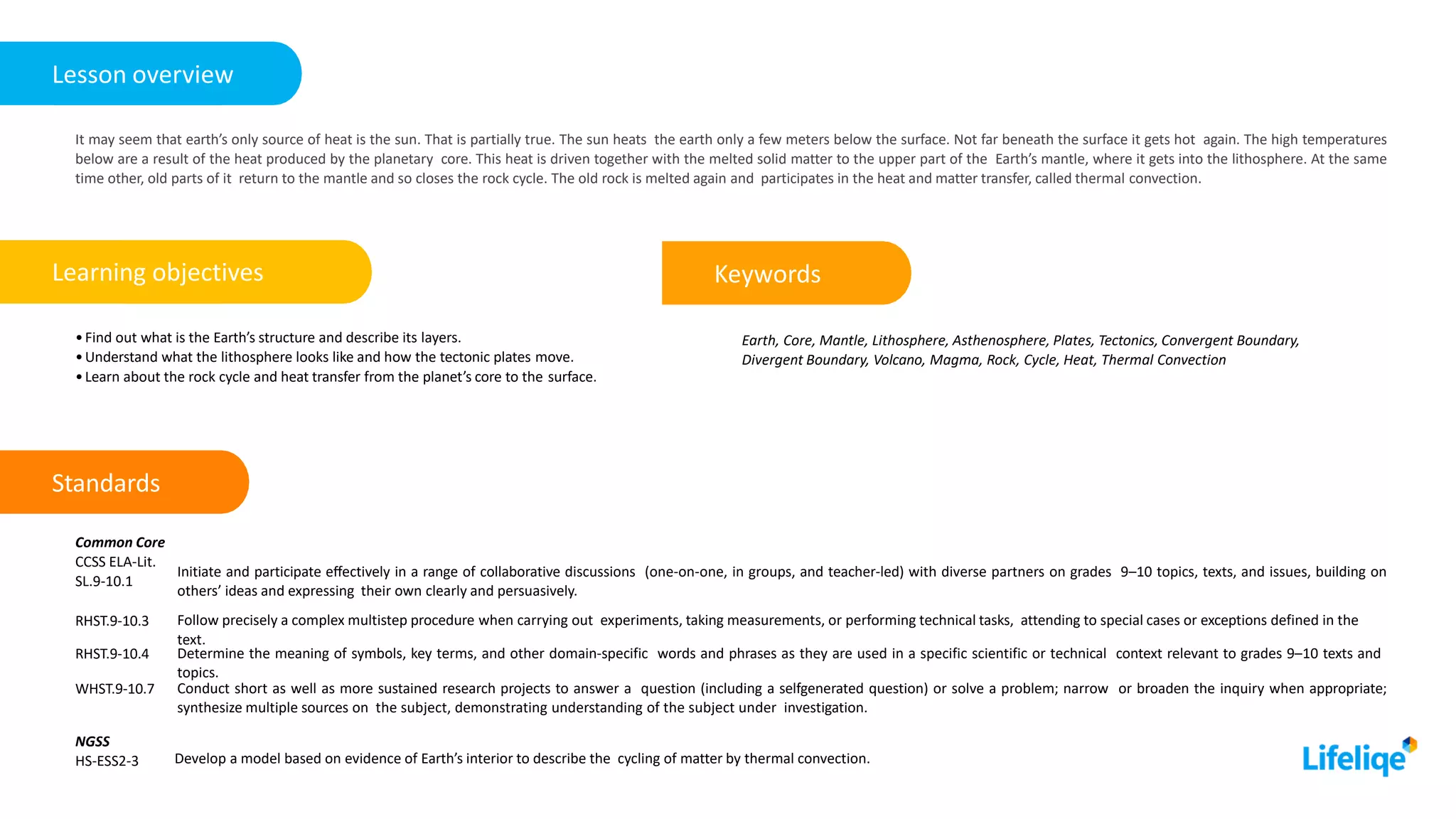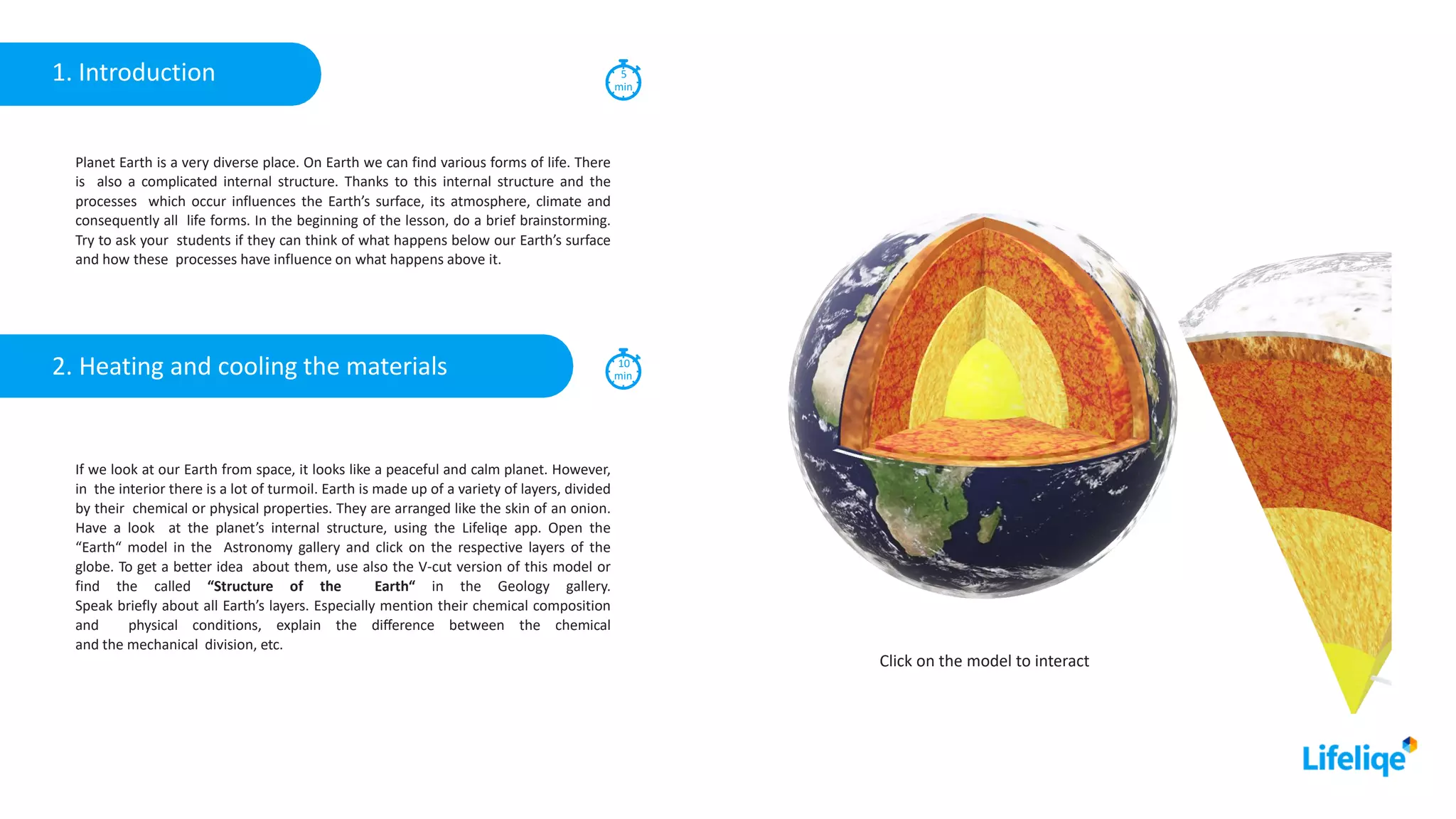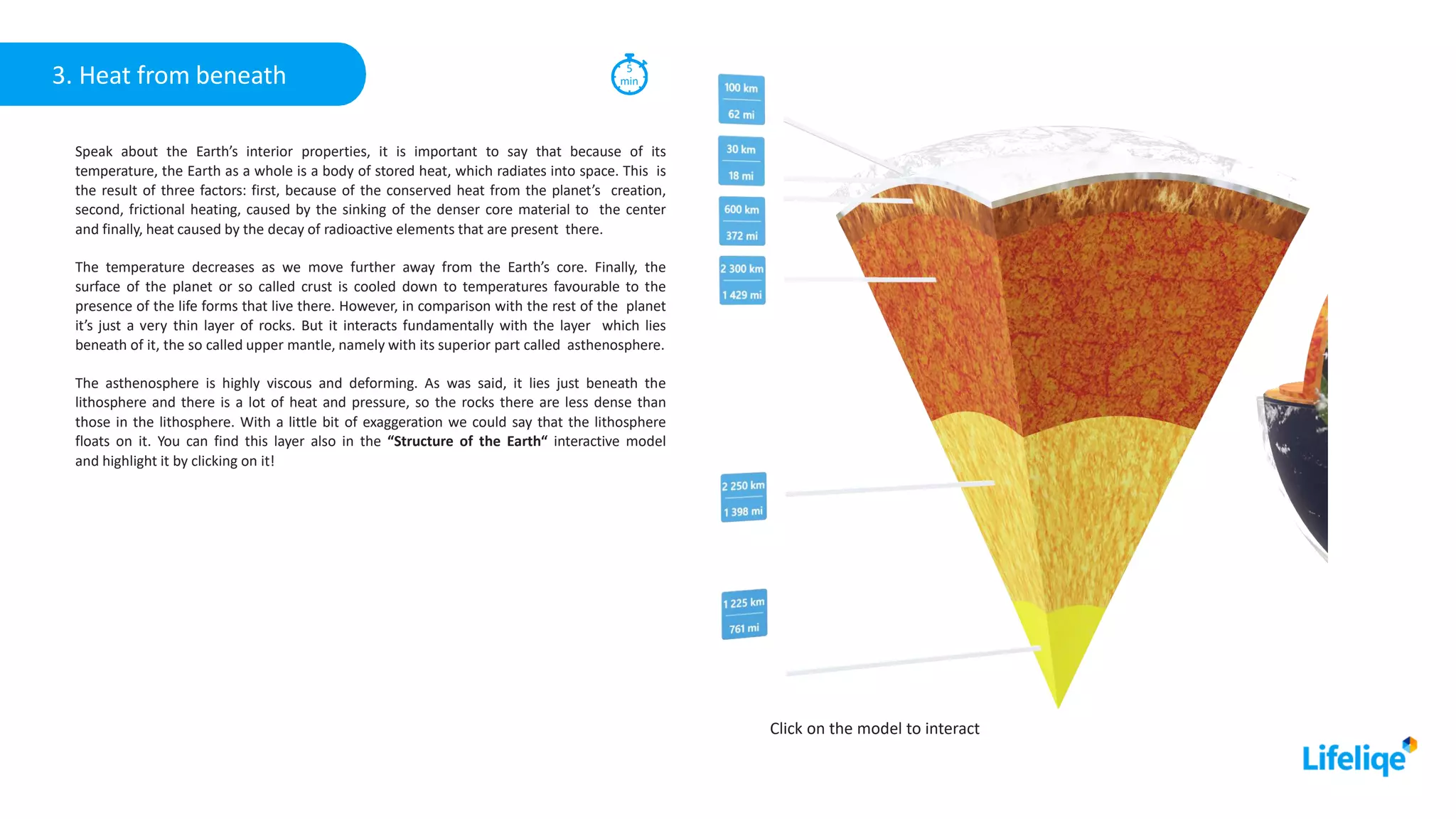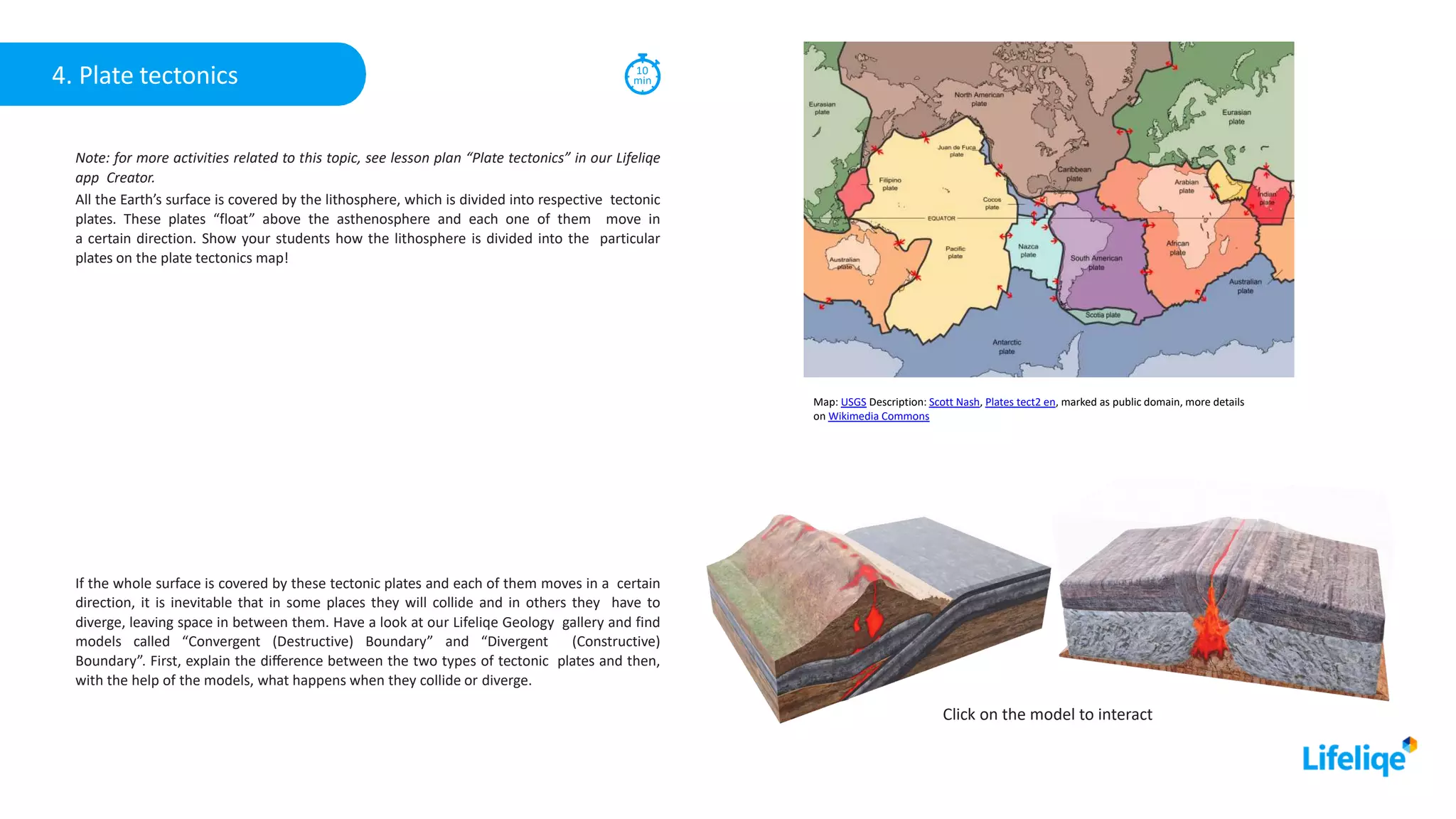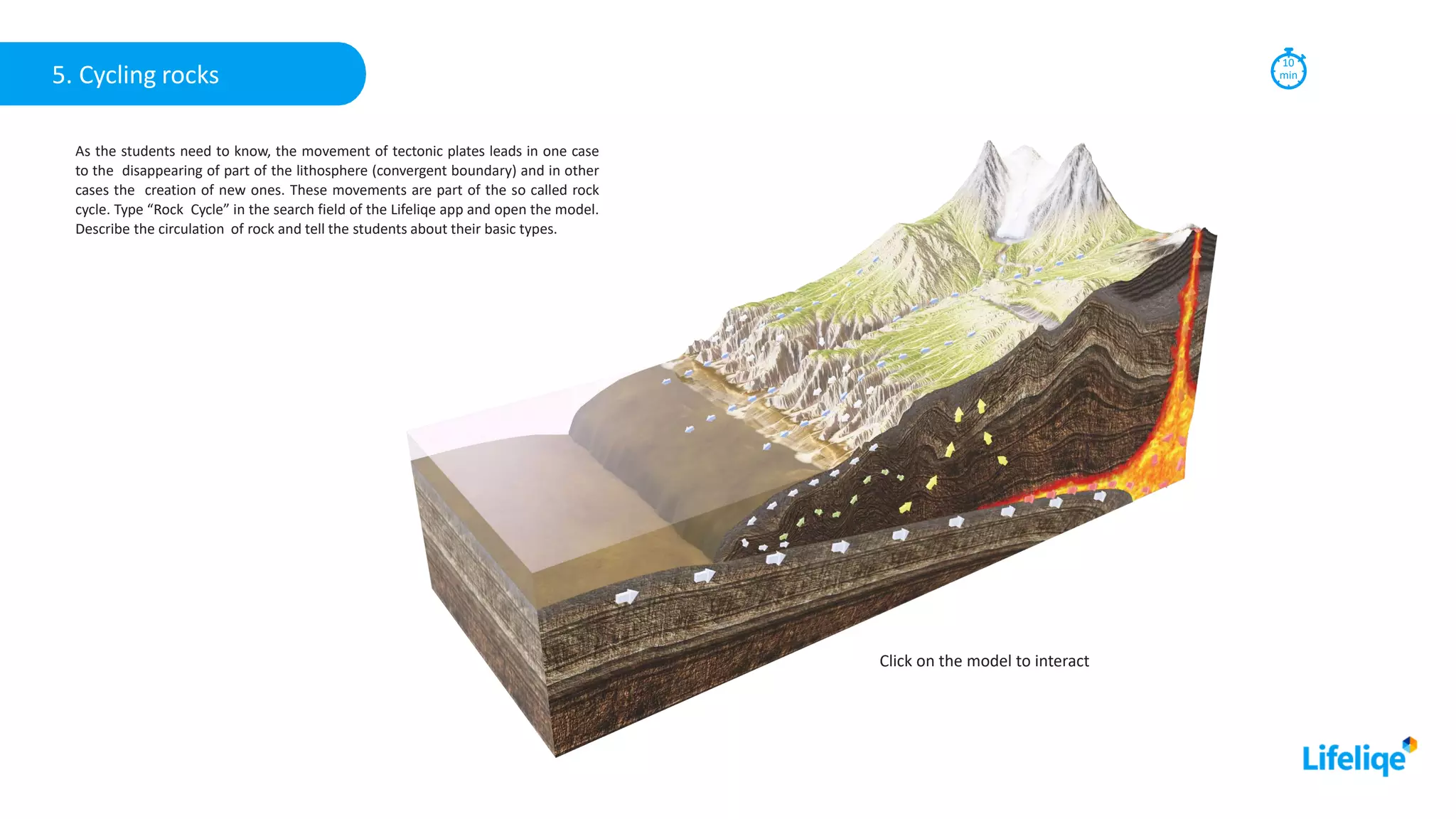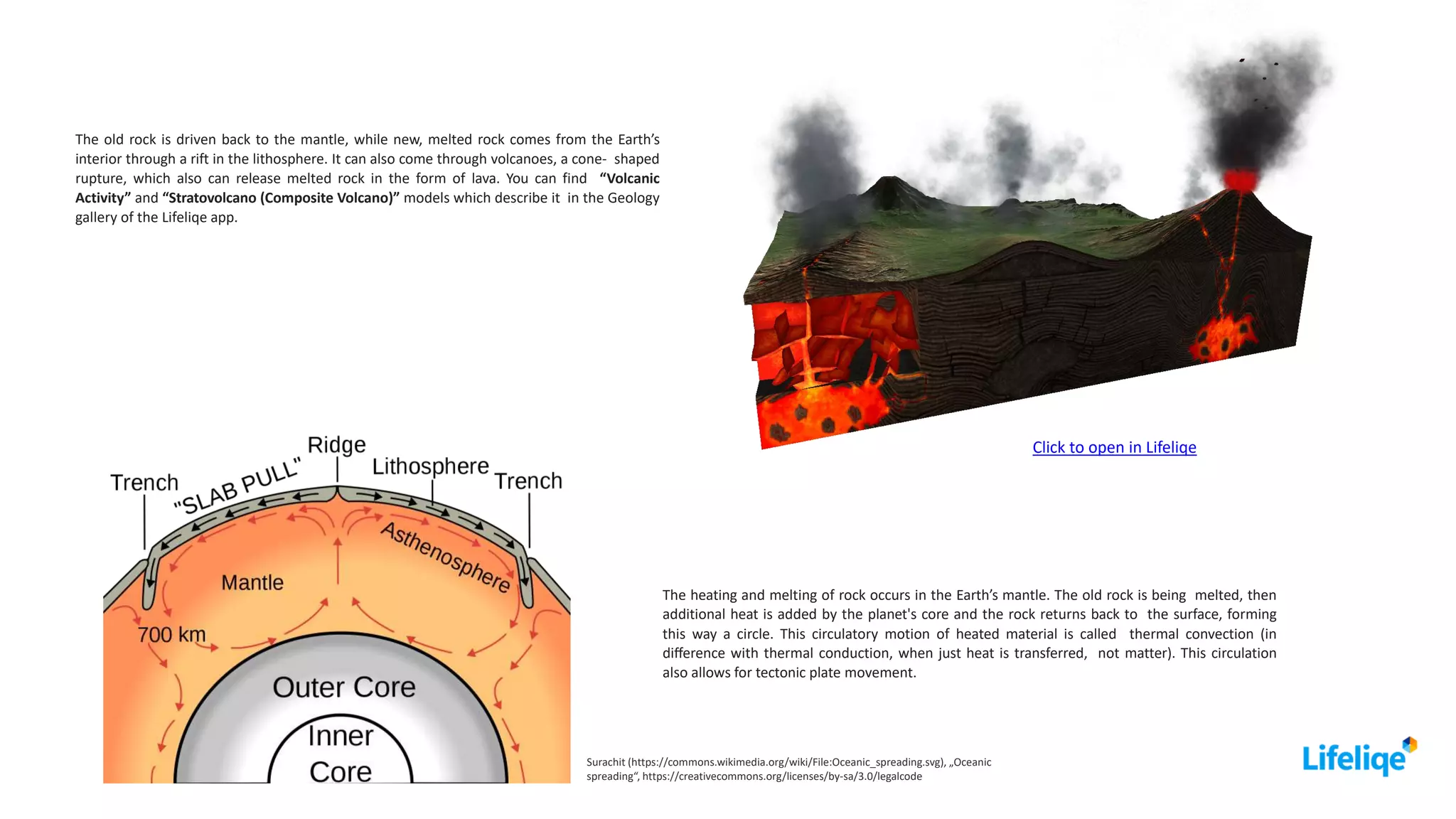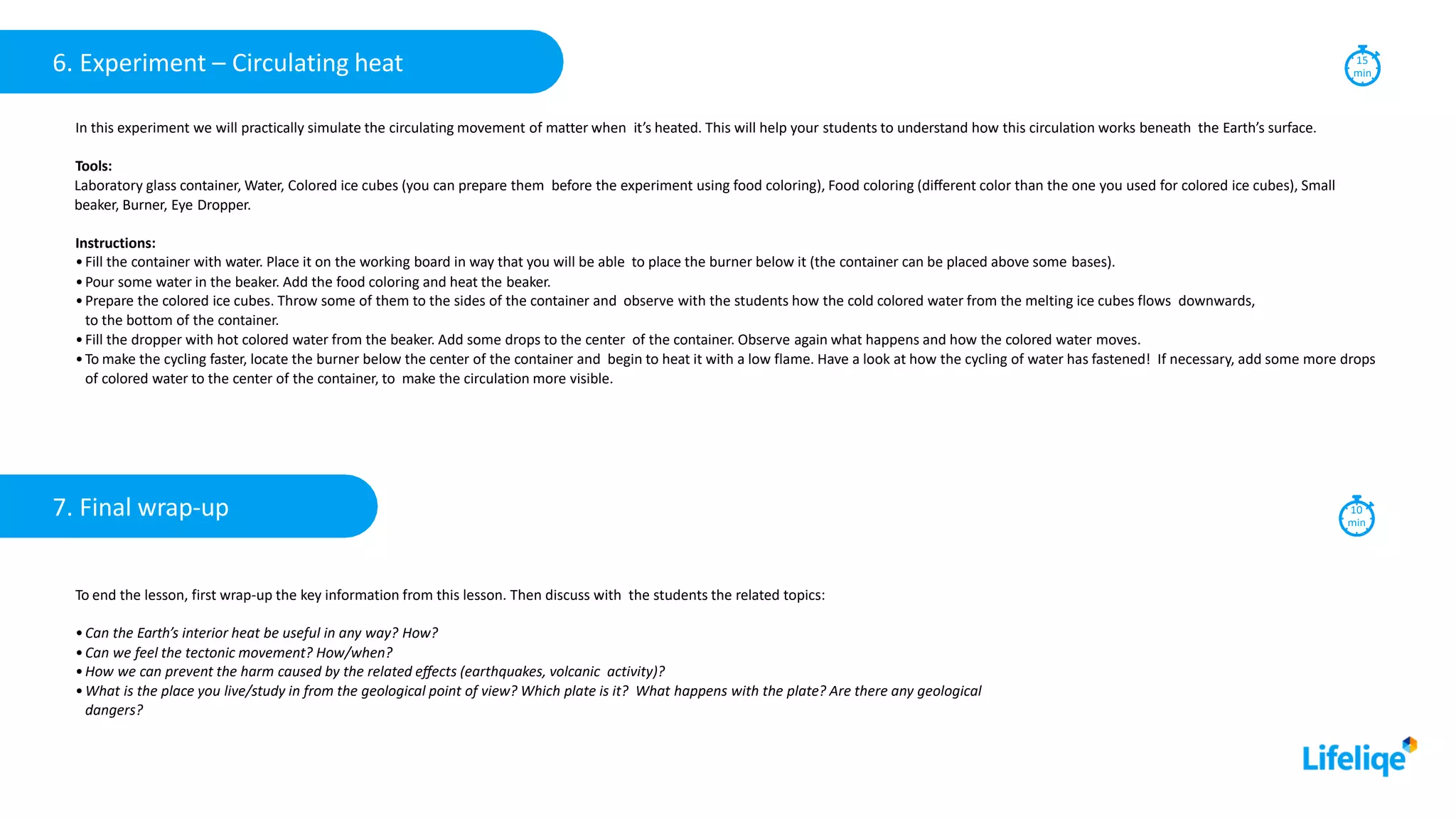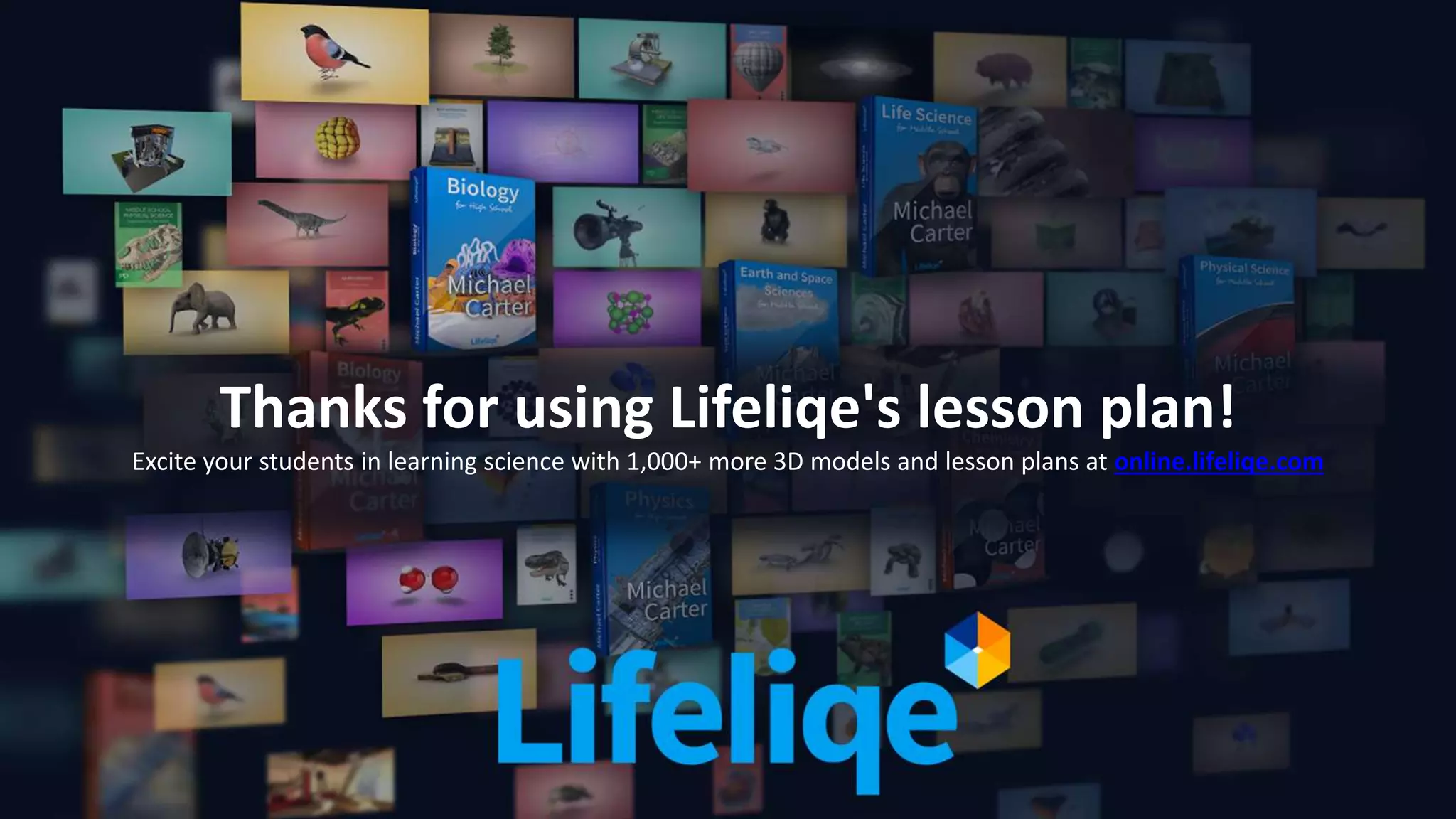This lesson discusses heat transfer within the Earth and how it relates to plate tectonics and the rock cycle. It begins with an overview of the Earth's layered structure and heat sources within the core. Heat rises from the core through convection currents in the mantle, melting and recycling rocks. The movement of tectonic plates is driven by these convection currents. Where plates collide or separate, volcanoes or new crust can form. An experiment simulating convection currents demonstrates how heated material circulates similarly within the Earth. Overall, the lesson explains how the Earth's internal heat drives surface changes through plate tectonics and the rock cycle.
